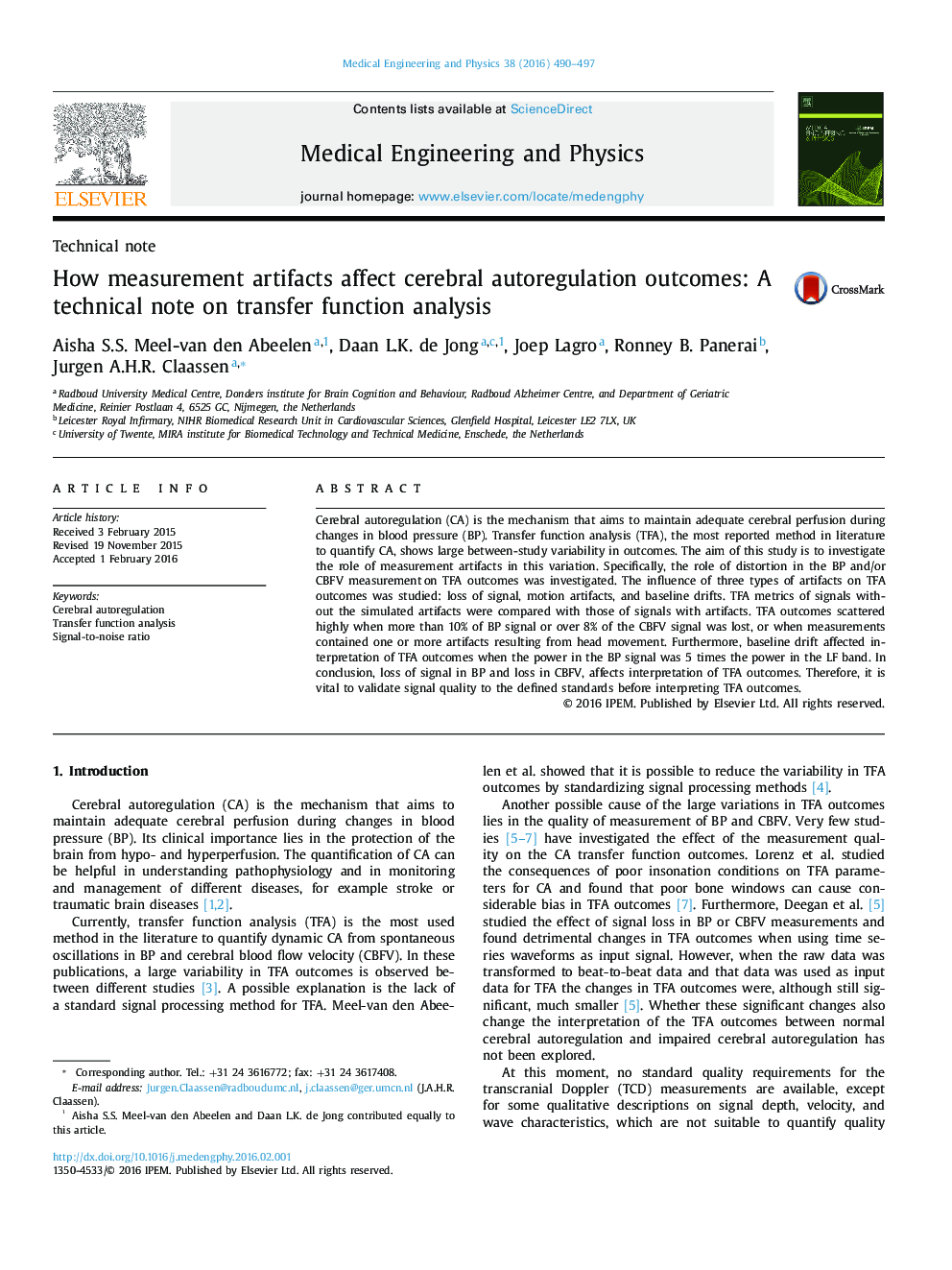| Article ID | Journal | Published Year | Pages | File Type |
|---|---|---|---|---|
| 875706 | Medical Engineering & Physics | 2016 | 8 Pages |
•Outcomes for cerebral autoregulation, defined with transfer function analysis, depend highly on transcranial Doppler signal quality.•Data loss and motion artifacts, even for a short moment, influences cerebral autoregulatory outcomes considerably.•Data should meet the criteria as proposed in this article to ensure adequate outcomes for the cerebral autoregulatory performance.
Cerebral autoregulation (CA) is the mechanism that aims to maintain adequate cerebral perfusion during changes in blood pressure (BP). Transfer function analysis (TFA), the most reported method in literature to quantify CA, shows large between-study variability in outcomes. The aim of this study is to investigate the role of measurement artifacts in this variation. Specifically, the role of distortion in the BP and/or CBFV measurement on TFA outcomes was investigated. The influence of three types of artifacts on TFA outcomes was studied: loss of signal, motion artifacts, and baseline drifts. TFA metrics of signals without the simulated artifacts were compared with those of signals with artifacts. TFA outcomes scattered highly when more than 10% of BP signal or over 8% of the CBFV signal was lost, or when measurements contained one or more artifacts resulting from head movement. Furthermore, baseline drift affected interpretation of TFA outcomes when the power in the BP signal was 5 times the power in the LF band. In conclusion, loss of signal in BP and loss in CBFV, affects interpretation of TFA outcomes. Therefore, it is vital to validate signal quality to the defined standards before interpreting TFA outcomes.
